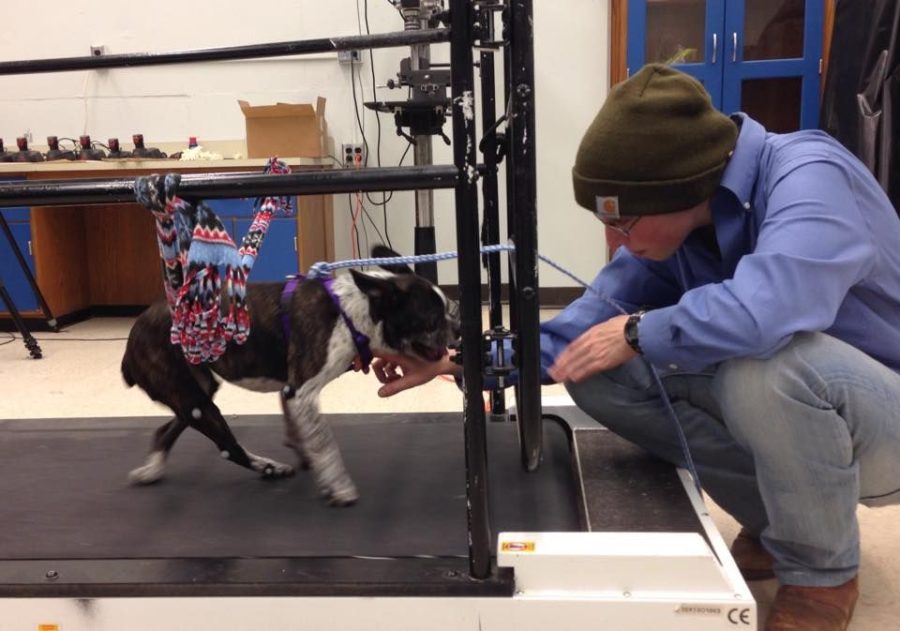Canine Rehabilitation Center serves post-op pups
March 3, 2016
Post-operative rehabilitation is looking brighter for dogs treated in Iowa State’s small animal hospital.
The Canine Rehabilitation Center was added to the Hixson-Lied Small Animal Hospital in the summer of 2012. This primarily serves dogs recovering from surgeries coming from orthopedic or neurology. Patients are commonly recovering from ruptured disc, knee or hip surgeries.
The center has innovative machines, such as underwater and land treadmills, an in-ground pool, therapeutic ultrasound and other technologies to better the treatment of its patients.
The treatments can last anywhere from a week to months, depending of the severity of the injury. Vet Med’s neurology department is currently running clinical studies on paralyzed dogs.
“The purpose of our clinical trial is to test the effectiveness of a potential drug, Chondroitinase, in helping paralyzed dogs, and hopefully one day paralyzed people, regain spinal cord functions after severe injuries,” the Clinical Trial brochure stated.
These dogs are rotated each week as part of an ongoing study and then brought back once their turn comes back around.
“We move their joints to keep them from getting stiff,” said Claire Ropke, third-year veterinary student currently working with the dachshunds. The team also helps the dogs walk in the underwater treadmill.
Dr. Hilary Hu, adjunct instructor in the neurology department, is part of the team running the tests of the clinical trial on these paralyzed dogs and has been using the center for their rehab.
“Strengthening is one thing,” Hu said. Range of motion is another, and we also [are] encouraging [the dogs] to move their legs more with some assistance from the water.”
Once post-operation dogs have had a bit of time to heal — typically a few weeks — they move to rehab.
“Most patients respond very well [to the rehab],” Hu said. “A lot of neurological patients will go to rehab once they’ve regained some function. The [dogs] that start with some function can recover more quickly with rehab than without rehab.”
Hu went on to say both the recovery duration and quality of recovery can be improved by adding rehab to a dog’s post-operation lifestyle.
“Another benefit to this center is that a lot of owners can’t take care of post-op patients because they don’t have the time or ability,” Hu said. “Owners want to be doing something but they can’t do it at home, so it’s a great comfort to the clients as well to provide this kind of service.”
Although Hu said she is happy about the rehab center, she agrees there are some issues related to it. She said the biggest issues, from a prognosis point of view, are determining how long the time of recovery will take and the quality of the recovery.
“Some owners can get impatient, wanting to know when their pet will start walking again,” Hu said.
Hu and Victoria Kichler, another third-year veterinary student, said finances can be an issue, too. Some treatments even have to be stopped halfway through recovery because of this.
No plans are currently in the works to expand any of the rehabilitation center; however, Tom Johnson, director of hospital operations, said there is discussion taking place on how to handle the increase of demand.
“Our biggest challenge is the need for our services has grown so rapidly that we are running out of space and trained personnel to handle the case load,” Johnson said.

















